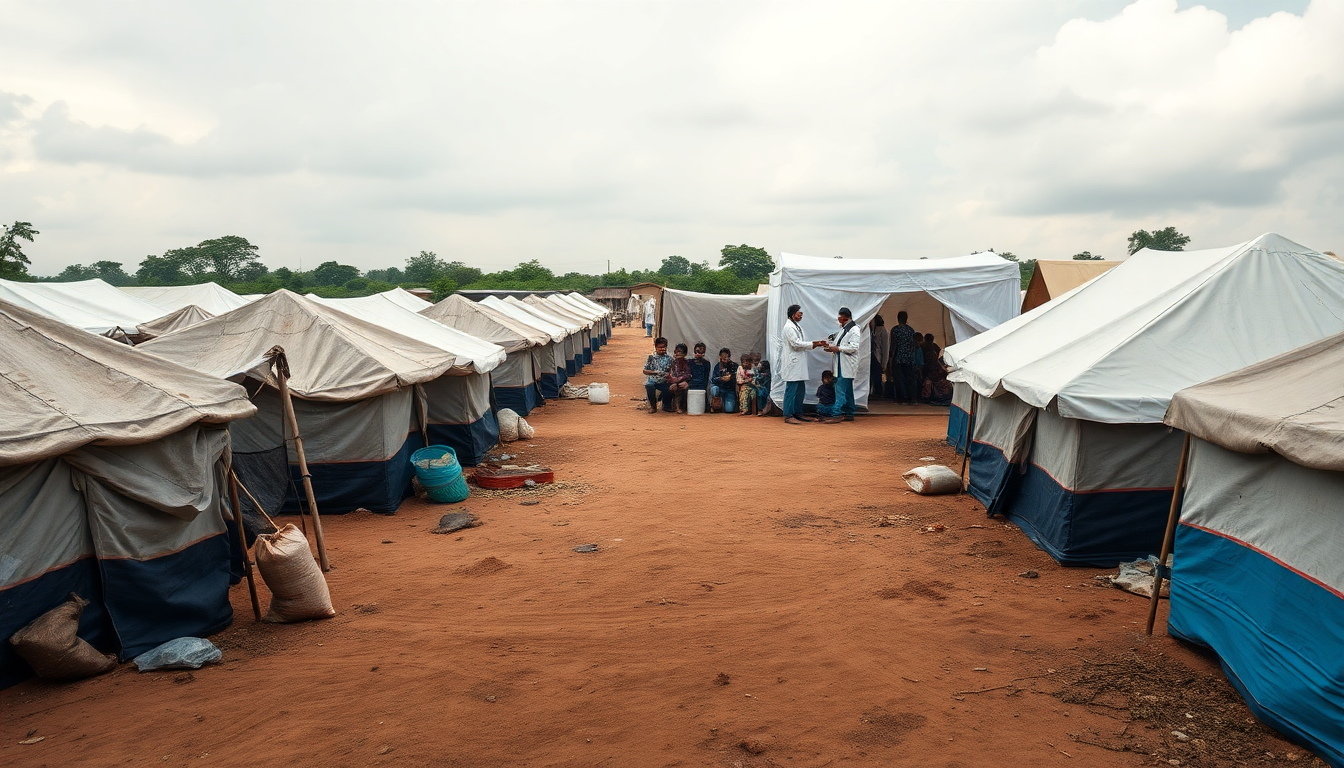Table of Contents
The Rohingya refugee camps in Bangladesh, which house over one million displaced individuals, are currently facing a **healthcare crisis** that has been worsened by significant cuts in foreign aid. This troubling situation is not new; it follows the mass exodus of the Rohingya people from Myanmar in 2017, a humanitarian crisis that has persisted for years. But what does this mean for the health and wellbeing of such a vulnerable population? The implications are profound, affecting not just immediate health services but also the long-term prospects of these individuals.
Healthcare in Crisis Mode
With recent cuts in foreign aid, particularly from countries like the United States and the United Kingdom, healthcare providers in the Rohingya camps are struggling to meet the needs of the population. During a recent visit, UN Secretary-General Antonio Guterres highlighted the desperate situation on the ground. The reality is stark: medical facilities that once provided essential care are now at risk of closing or scaling back their services. Can you imagine relying on a healthcare system that’s crumbling around you?
Take Jahid Alam, for example. A former farmer from Myanmar, Jahid has been left unable to work due to a debilitating leg condition. He has depended on organizations like **Doctors Without Borders** for treatment, but with aid dwindling, what does the future hold for him? The risk of amputations and untreated chronic conditions looms large as resources become increasingly scarce. It’s a harrowing reality for many.
Families like Jahena Begum’s are also feeling the strain. With three children facing blindness and cognitive disabilities, the lack of adequate healthcare poses a significant threat to their quality of life. While some assistance has been provided, ongoing cuts jeopardize their access to essential medical supplies and treatments. The emotional toll of these hardships is immense, as families wrestle with not just physical ailments but the stigma of disabilities in an already challenging environment. How do you cope when basic healthcare feels like a luxury?
The Aftermath of Landmine Injuries: A Long Road to Recovery
The Rohingya community is also grappling with the consequences of landmine injuries, a tragic legacy of the ongoing conflict in Myanmar. Anowar Shah, who lost a leg in a mine explosion, shares a story that reflects deep despair and an emotional burden that often accompanies such physical disabilities. Have you ever thought about how the psychological impact of an injury can be just as debilitating as the physical scars? For many, it leads to feelings of hopelessness and dependency.
In the camps, rehabilitation programs are striving to support those affected by landmines and other injuries. Initiatives from organizations like **Humanity & Inclusion** focus on delivering prosthetic limbs and physical therapy to help refugees regain their independence. Yet, with funding cuts, the sustainability of these programs is hanging by a thread, and the number of individuals receiving such support is alarmingly low. What happens when the help you desperately need is no longer available?
Abdul Hashim, another refugee impacted by a landmine, speaks to the emotional struggle of transitioning from independence to reliance on others. His journey underscores the critical importance of continued support for rehabilitation services, which not only aid in physical recovery but also foster a sense of agency and dignity among those affected. Isn’t it essential for everyone to feel a sense of control over their own lives?
The Urgent Need for Comprehensive Support and Solutions
The funding gaps resulting from foreign aid cuts have created a situation that demands immediate attention. Experts in humanitarian aid are stressing the necessity of a **regional response**, urging neighboring countries and international organizations to step up their support. The Rohingya refugee crisis isn’t merely a humanitarian issue confined to Bangladesh; it’s a regional challenge that calls for a coordinated approach to ensure that adequate resources are allocated to meet the needs of those affected.
As the international community wrestles with the implications of reduced aid budgets, it’s vital to recognize the far-reaching consequences. The Rohingya people, already facing immense challenges, are now at risk of losing access to fundamental services that could mean the difference between life and death. The call for action is clear: we need a collective effort to ensure that the most vulnerable populations don’t bear the brunt of policy decisions made far from their reality. Are we really willing to let this happen?
In conclusion, the current state of healthcare in the Rohingya refugee camps serves as a stark reminder of the importance of sustained humanitarian support. As funding diminishes, the resilience of this community is put to the test, and the urgent need for action has never been clearer. Only through a concerted effort can we improve the lives of those who have already endured so much. Will we rise to the occasion?


